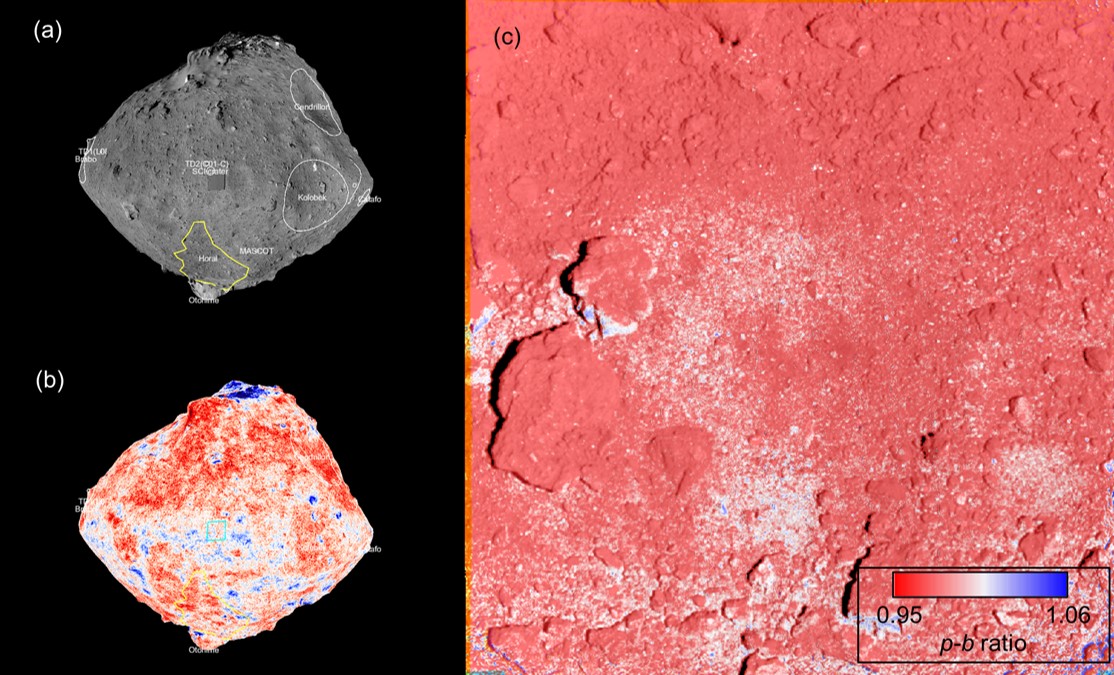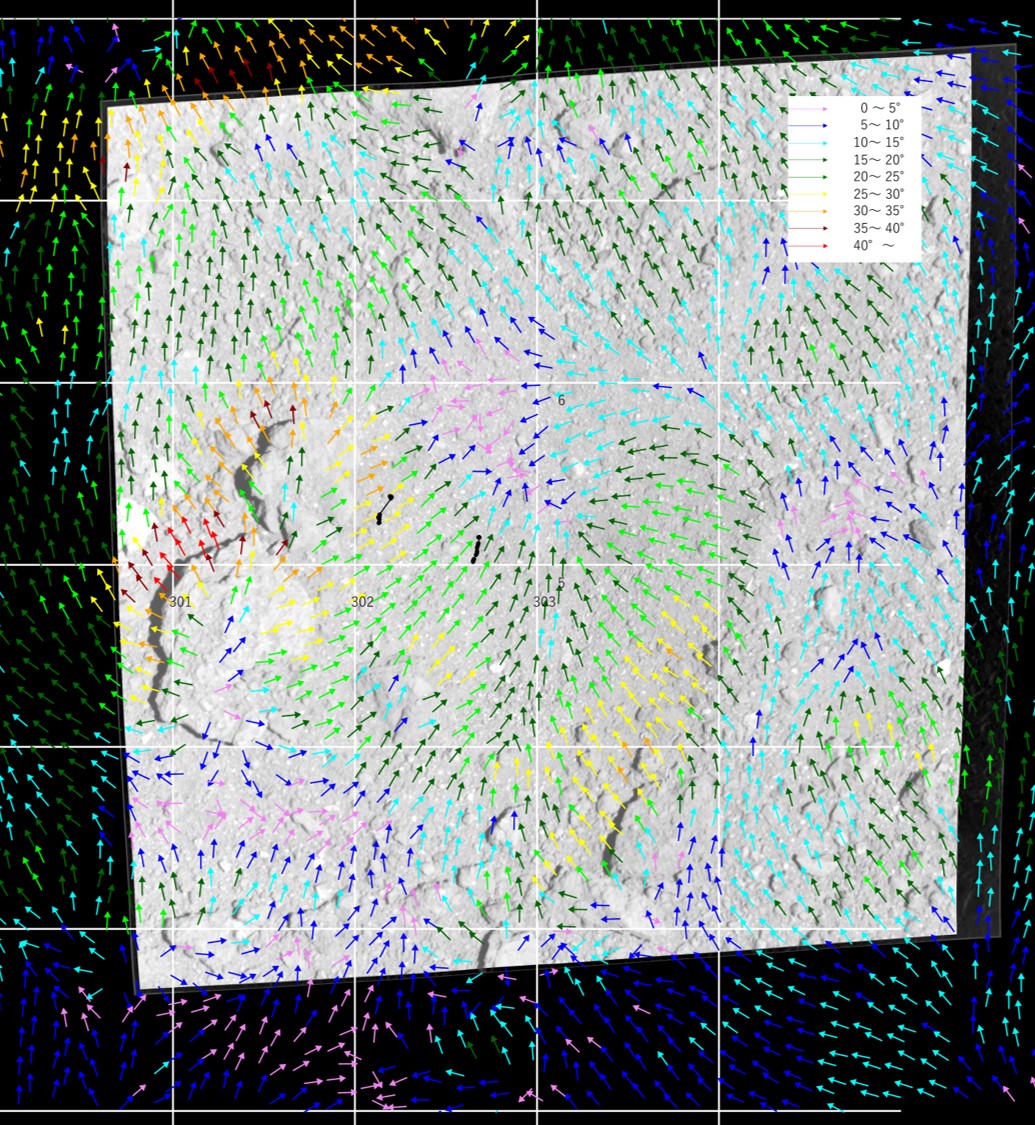- 1Gakushuin University, Faculty of Science, Tokyo, Japan (hiroshi.kikuchi@gakushuin.ac.jp)
- 2IRSPS, Università d’Annunzio, Pescara, Italy
- 3University of Tokyo, Tokyo, Japan
- 4ISAS/JAXA, Sagamihara, Japan
- 5Rikkyo University, Tokyo, Japan
- 6Aizu University, Fukushima, Japan
Abstract
Active boulder movements were observed when the Hayabusa2 spacecraft ascended from the surface of (162173) Ryugu. This study focuses on boulders that have moved over long distances (>1 m) and compares their movements with the gravitational field on the surface. Our results suggest that boulders rolled and fell down into regions of lower gravity potential. Since such phenomena can also be expected from seismic shaking effects by impacts, repeated movements of boulders near the equator could potentially refresh the surface.
1. Introduction
During the operation of touchdown rehearsals on March 8, 2019, specifically during the low altitude observation, several boulders were observed to have moved as the spacecraft ascended during which thrusters were fired. The movements of the boulders were primarily induced by gas flow from the thrusters [1]. The slow speed of the boulder movements, along with their rolling motions, resulted in some boulders moved > 1 meter along the asteroid surface. To investigate how these boulders were influenced by the surface gravity field, this study examined the relationship between the trajectories of moved boulders and the Ryugu's surface gravity field.
2. Data and Method
To track the locations of the moved boulders, we used 24 the Optical Navigation Camera (ONC) images and mapped them onto a shape model (with 1,579,014 vertices and 3,145,728 plates). Additionally, we generated p-b (860 to 480 nm) ratio images similar to [2] using two ONC-T images for the moved boulders. Then, with a current rotation period of 7.63 hours, we calculated the surface gravity of Ryugu. The direction and magnitude of the slope were determined from the gravity direction vector and the surface normal vector of the shape model.
3. Results
The observed locations of the moved boulders exhibit the red spctral slope (Fig. 1). The expected directions of boulders which are calculated from shape model closely align with the observed trajectories (Fig. 2).
4. Discussion
The results indicate that after the boulders moved > 1 meter received momentum from the thrusters, they started to move along the direction of gravity. These movements of boulders can be similar to what is expected to be triggered by vibrations due to natural impacts on the asteroid surface. If such phenomena are to repeat, material movement in the equatorial region of Ryugu, where the gravitational potential is high may lead to resurfacing [2, 3].
Acknowledgements
This work is supported by the JAXA Hayabusa2# International Visibility Enhancement Project.
References
[1] Sakatani et al., 2024, LPSC 55, #1719. [2] Morota et al., 2020, Science, 368, 654-659. [3] Kikuchi et al., 2022, LPSC 53, #1943.

Fig. 1. Observations of rolled boulder areas depicted using JADE (https://jade.darts.isas.jaxa.jp)(a, b). p-b ratio images obtained from ONC images (hyb2_onc_20190308_033713_txf_l2drc) (c).

Fig. 2. Direction of movement for rolled boulders influenced by surface gravity. The black paths track the movement of rolled boulders. The direction and color of the arrows indicate the direction and magnitude of the gravitational slope. Image (hyb2_onc_20190308_033713_txf_l2d) projected onto an equidistant latitude-longitude map.
How to cite: Kikuchi, H., komatsu, G., Miyamoto, H., Hemmi, R., Shimizu, Y., Kameda, S., Sakatani, N., Hirata, N., Tatsumi, E., Sato, H., Watanabe, M., and Sugita, S.: Active Boulder Falls on Asteroid Ryugu, Europlanet Science Congress 2024, Berlin, Germany, 8–13 Sep 2024, EPSC2024-671, https://doi.org/10.5194/epsc2024-671, 2024.